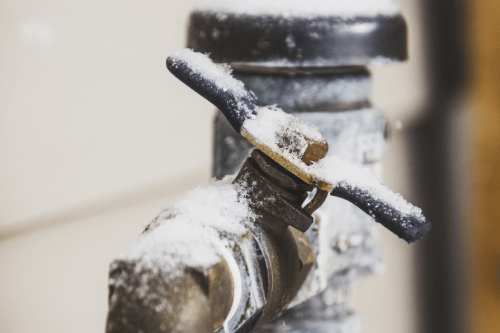Preventing Frozen Pipes in Cold Weather: Pro Tips
Preventing Frozen Pipes in Cold Weather: Pro Tips
Blog Article
This article listed below in relation to Prevent Frozen Pipes is incredibly insightful. Read it for your own benefit and see what you think of it.

Winter can damage your pipes, specifically by freezing pipelines. Right here's exactly how to prevent it from occurring and what to do if it does.
Intro
As temperatures decrease, the danger of icy pipes rises, possibly resulting in costly fixings and water damages. Understanding just how to avoid frozen pipelines is essential for homeowners in chilly climates.
Recognizing Icy Pipelines
What triggers pipes to freeze?
Pipes ice up when revealed to temperature levels listed below 32 ° F (0 ° C) for extended durations. As water inside the pipelines freezes, it increases, taxing the pipeline wall surfaces and potentially creating them to rupture.
Dangers and problems
Icy pipelines can lead to water supply disturbances, building damage, and costly repairs. Burst pipelines can flooding homes and create considerable architectural damages.
Indicators of Frozen Pipes
Identifying icy pipelines early can stop them from breaking.
Exactly how to determine frozen pipes
Look for lowered water circulation from faucets, unusual smells or sounds from pipes, and noticeable frost on revealed pipes.
Prevention Tips
Shielding prone pipes
Cover pipes in insulation sleeves or use warmth tape to safeguard them from freezing temperature levels. Focus on pipes in unheated or external areas of the home.
Home heating techniques
Maintain interior areas properly heated up, particularly areas with plumbing. Open cabinet doors to permit warm air to flow around pipes under sinks.
Protecting Exterior Pipes
Garden hose pipes and exterior faucets
Disconnect and drain pipes yard pipes before wintertime. Set up frost-proof spigots or cover outside faucets with shielded caps.
What to Do If Your Pipes Freeze
Immediate activities to take
If you suspect icy pipelines, keep taps open to ease pressure as the ice melts. Use a hairdryer or towels soaked in warm water to thaw pipelines gradually.
Long-Term Solutions
Structural adjustments
Consider rerouting pipelines far from exterior walls or unheated locations. Include extra insulation to attic rooms, cellars, and crawl spaces.
Upgrading insulation
Buy high-grade insulation for pipelines, attics, and wall surfaces. Proper insulation aids maintain consistent temperatures and minimizes the threat of icy pipelines.
Verdict
Preventing frozen pipes requires positive steps and quick reactions. By comprehending the causes, signs, and preventive measures, house owners can safeguard their pipes during winter.
6 Proven Ways to Prevent Frozen Pipes and Protect Your Home
Disconnect and Drain Garden Hoses
Before winter arrives, start by disconnecting your garden hoses and draining any remaining water. Close the shut-off valves that supply outdoor hose bibs and leave the outdoor faucet open to allow any residual water to drain. For extra protection, consider using faucet covers throughout the colder months. It’s also important to drain water from any sprinkler supply lines following the manufacturer’s directions.
Insulate Exposed Pipes
Insulating your pipes is an effective way to prevent freezing. Pipe insulation is readily available at home improvement stores and is relatively inexpensive. Pay close attention to pipes in unheated areas such as the attic, basement, crawl spaces, or garage. Apply foam insulation generously to create a buffer against the cold. You can also wrap your pipes in heat tape or thermostat-controlled heat cables for added warmth.
Seal Air Leaks
Inspect your home for any cracks or openings that could let in cold air. Seal any holes around the piping in interior or exterior walls, as well as the sill plates where your home rests on its foundation. Additionally, make sure to keep your garage door closed unless you’re entering or exiting. Leaving it open creates a significant air leak that can lead to frozen pipes.
Allow Warm Air Circulation
During cold snaps, it’s essential to allow warm air to circulate evenly throughout your home. Leave interior doors ajar to promote better airflow. Open kitchen and bathroom cabinets to help distribute heat consistently around the rooms. If you have small children or pets, be sure to remove any household chemicals or potentially harmful cleaners from open cabinets for safety.
Let Faucets Drip
A small trickle of water can make a big difference in preventing ice formation inside your pipes. When temperatures drop significantly, start a drip of water from all faucets served by exposed pipes. This continuous flow helps prevent the water from freezing. Additionally, running a few faucets slightly can relieve pressure inside the pipes, reducing the chances of a rupture if the water inside does freeze.
https://choateshvac.com/6-proven-ways-to-prevent-frozen-pipes-and-protect-your-home/

We hope you enjoyed reading our piece about How to prepare your home plumbing for winter weather. Thank you so much for finding the time to read through our content. Enjoyed our blog entry? Please quickly share it. Help someone else discover it. We thank you for your readership.
Suggested Site Report this page